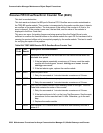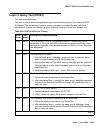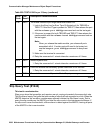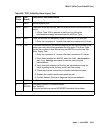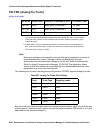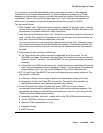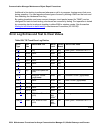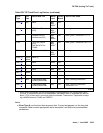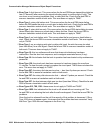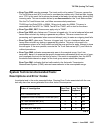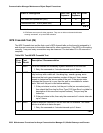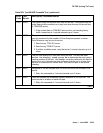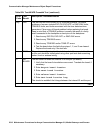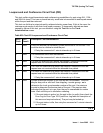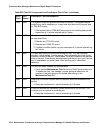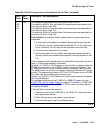
Communication Manager Maintenance-Object Repair Procedures
2306 Maintenance Procedures for Avaya Communication Manager 3.0, Media Gateways and Servers
b. Error Type 1: digit time-out. This occurs when the far-end PBX began transmitting digits too
late (10 seconds) after receiving the signal indicating ready to receive digits (if any). This
can occur on an incoming immediate, wink, or delay dial line. Check the far-end PBX to
ensure a translation match at both ends. This error does not apply to TN497.
c. Error Type 1: rotary dial before wink. This occurs when the far-end PBX starts dialing
before the PBX sends the wink on a wink-start or delay-dial trunk. Check the far-end PBX to
ensure a translation match at both ends. This error does not apply to TN497.
d. Error Type 1: rotary dial too early. This occurs when the far-end PBX starts dialing too soon
(about 50ms) after seizure on a wink start or delay dial line. Check the far-end PBX to
ensure a translation match at both ends. This error does not apply to TN497.
e. Error Type 1: on hook before wink. This occurs when the far end goes on hook before a
wink. Check the far-end PBX to ensure a translation match at both ends. This error applies
only to TN439.
f. Error Type 1: on an outgoing wink-start or delay-dial trunk, the wink time was too short
(less than 80ms) for a valid signal. Check the far-end PBX to ensure a translation match at
both ends. This error does not apply to TN497.
g. Error Type 15: this is a software audit error that does not indicate any hardware
malfunction. Run the short test sequence, and investigate associated errors (if any).
h. Error Type 18: this indicates that the trunk in question has been busied-out by maintenance
personnel.
i. Error Type 130: the circuit pack has been removed or has been insane for more than
11 minutes. To clear the error, reinsert or replace the circuit pack. TN439 does not alarm this
error. This error does not apply to TN497.
j. Error Type 257: the rotary dial rate was too slow — less than 8 pulses per second. Check
the far-end PBX to ensure a translation match at both ends.
k. Error Type 257: the rotary dial rate was too fast — above 12 pulses per second. Check the
far-end PBX to ensure a translation match at both ends.
l. Error Type 257: the time between digits was too short (less than 300ms). Check the far-end
PBX to ensure a translation match at both ends.
m. Error Types 513, 769, 1281: these errors do not apply to TN439 and TN497.
n. Error Type 1025: this indicates that the trunk is still seized with an incoming call. The
far-end PBX is not releasing the trunk after the call was dropped. Check the far-end PBX for
problems.
Once the trunk is released from the call, the severity of this problem is decreased. If Error
Type 1025 does not appear again, this means that the problem has been corrected. Verify
that Error Type 1025 does not reappear in the Error Log.



